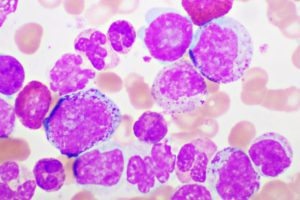Xeroderma pigmentosum is also known as XP. People with xeroderma pigmentosum develop extreme sensitivity to ultraviolet rays coming from the sun. It makes it impossible to come out in the sun.
Xeroderma pigmentosum has eight known subtypes.
It affects the skin exposed to sunlight and the eyes. Few individuals may have problems in the nervous system. They face intellectual disabilities, hearing problems, and developmental delays.
This disease is shown in 2018 movie named Midnight Sun.
Heredity
- Xeroderma pigmentosum (XP disease) is usually one type of rare autosomal recessive disorder. It means both parents have to carry defective genes to cause xeroderma pigmentosum.
- But one form of xeroderma pigmentosum is the autosomal dominant type. In this type, only one parent carries defective genes, but the parent himself or herself also suffers from that disease in contrast to being a carrier.
- People with one defective gene carrying xeroderma pigmentosum and another normal gene will not show significant symptoms and they will lead a normal life, but they will remain carriers.
- Defect in the DNA repair system results in xeroderma pigmentosum. Due to impairment in the nucleotide excision repair system, this type of hypersensitivity to ultraviolet rays develops.
Onset
Most of the time it is diagnosed in early childhood, in some cases, it may be diagnosed before birth. But it can also be diagnosed in adult life or later phase of childhood. Well, these instances are less common.
Symptoms
This disease naturally progresses into three stages.
The first stage starts within six months after birth, though during birth skin looks normal.
- At first, the baby starts to develop freckles over the sun-exposed areas such as the face, arms, neck, legs.
- Some may have painful blisters. Sunburn causes redness in the skin.
- Blisters develop after exposure to the sun.
- Hyperpigmentation or hypopigmentation both can be seen.
- Some of you may have scarring, spider veins (also known as telangiectasia in medical terms), and thinning of the skin.
The second stage occurs after chronic sun exposure- which may lead to skin atrophy, poikiloderma, mottled hypopigmentation, or hyperpigmentation.
In the Third stage development of precancerous lesions occurs such as actinic keratosis, various skin cancers ( Melanoma, Squamous cell carcinoma, Basal cell carcinoma).

Vision problems
- Eyelids may turn inwards or outwards which is not normal in healthy people.
- Photophobia – means extreme sensitivity towards sunlight
- Excessive formation of tears.
- Cloudiness over the lends, sometimes blindness may occur.
Hearing difficulties
Some people experience progressive hearing loss, which may lead to deafness.
Neurological problems
- Developmental delay.
- Muscle weakness, muscle spasticity, rigidity occur.
- Absent or slow reflexes.
- Microcephaly (less than normal head size)
- Extreme poor motor development skills.
Diagnosis
It is usually detected in the early period of infancy. Children with sunburn after their first exposure to the sun is the key to diagnosis.
Measurements of the DNA repairing factor from blood or skin samples helps to diagnose xeroderma pigmentosum precisely.
Treatment
- They should restrict their children from going out during the daytime.
- An appointment with a dermatologist should be done frequently to detect the growth of any precancerous lesions.
- Regularly check their eyes with an ophthalmologist.
- If there is a growth of any type of precancerous lesion such as actinic keratosis then it can be treated by cryotherapy.
- Monitoring by a neurologist to diagnose any type of neurological problem present or not.
- Parents need to maintain their children’s life to avoid sun exposure.
- Parents must undergo genetic counseling and if one of them is a carrier they should avoid consanguineous marriage to avoid the birth of xeroderma pigmentosum affected children.
- Some doctors prescribe isotretinoin which is a derivative of vitamin A to prevent cancerous lesions. But you must consult a specialist before using it.
Preventive measures
If you are suffering from xeroderma pigmentosum (XP sun disease), you will have to be extremely cautious to protect yourself from ultraviolet radiation every day. Some preventive measures are :
- Apply good quality sunscreen if you are mildly sensitive to sunlight.
- Using Ultraviolet ray-absorbing sunglasses to protect your eyesight.
- Wearing long clothes, having long sleeves and long pants and a hat to protect yourself from ultraviolet rays.
Final words
Xeroderma pigmentosum can be a life-threatening disease sometimes. Having a disease like this may hamper your daily activities and life can be more challenging. But with proper guidelines and alternative lifestyles like night school, night camp can be arranged to maintain a social life and avoid exposure to ultraviolet rays coming from the sun.


